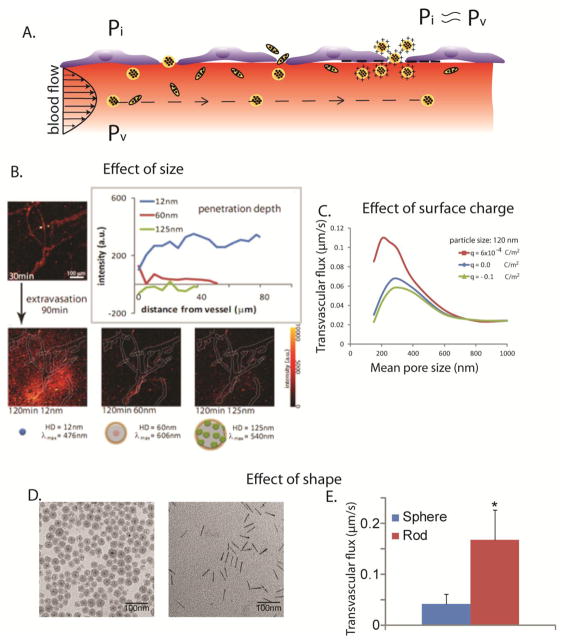Figure 2.
Effect of particle physicochemical properties on transvascular transport. A.) Interstitial fluid pressure, Pi, in solid tumors is elevated and is approximately equal to microvascular pressure, Pv, which eliminates transvascular pressure gradients and renders diffusion the dominant mechanism of transport. Spherical particles move with the flow, while elongated particles rotate as they move and interact with the vessel wall. Cationic particles are concentrated near the vessel wall owing to electrostatic attractions. B.) Transvascular transport of nanoparticles is size-dependent, with small nanoparticles, less than 60 nm in diameter, able to effectively extravasate (adapted with permission from 52). C.) Cationic nanoparticles have superior transvascular flux in solid tumors, with q [Coulomb/m2] being the surface charge density (simulation results obtained with permission from 69) and D. and E.) Rods can more effectively extravasate into the tumor compared with spherical particles of the same hydrodynamic diameter. Asterisk denotes a statistically significant difference (obtained with permission from 55).

